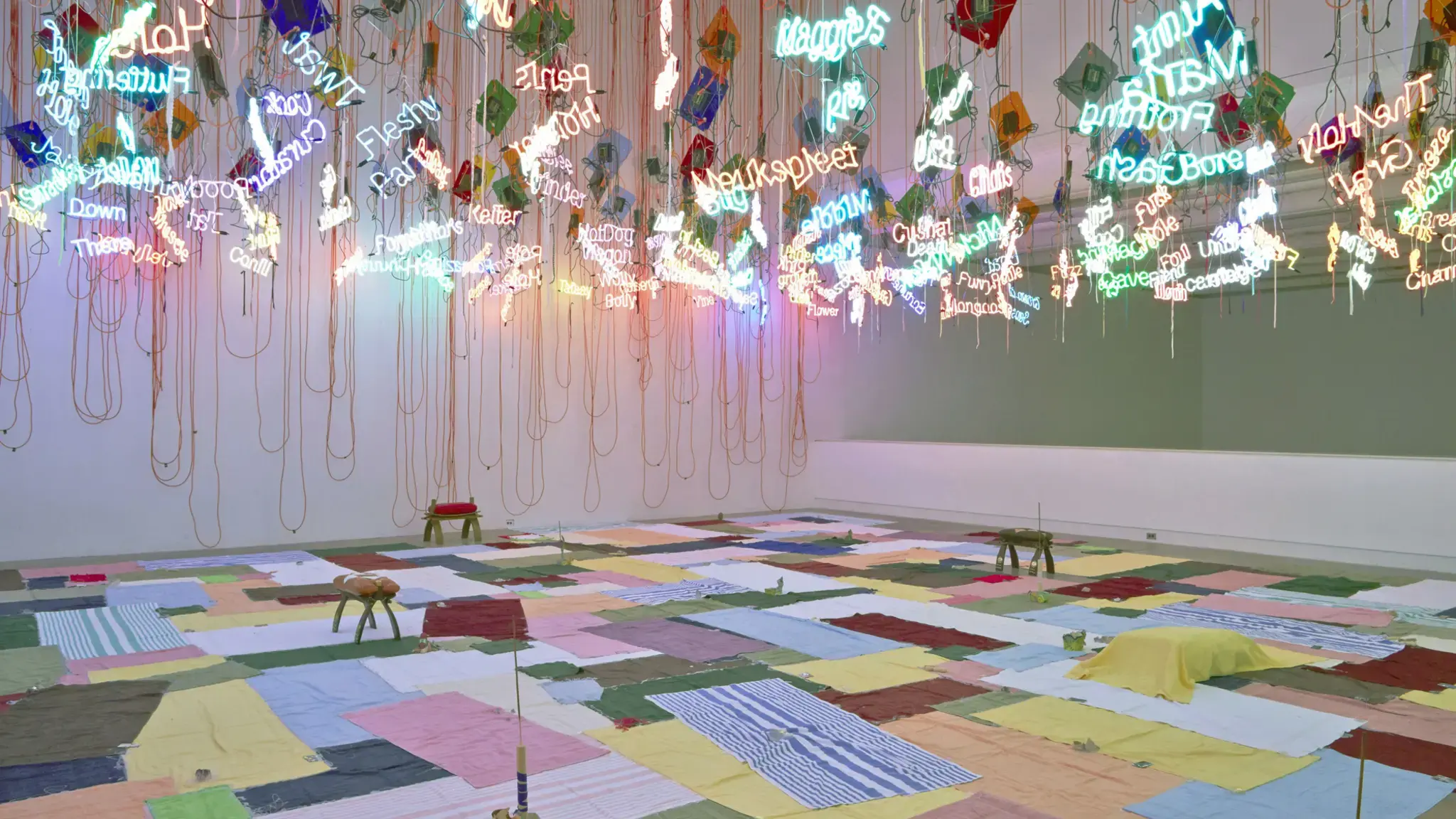

In the introductory essay of the monograph accompanying the Center-funded Jason Rhoades, Four Roads presented at the Institute of Contemporary Art in 2013, chief curator Ingrid Schaffner contextualizes the artist’s sprawling work and ambitions. In the following excerpt, Schaffner highlights Rhoades’s artistic process and his vision of creating a single, overarching work.
“Jason Rhoades was cheerfully flat-footed when it came to doing what he considered the job of being an artist: to represent the world. He created an operation that pretty much, straight-up, contained everything in it. And what was it? It was his world: the one Jason Rhoades lived and worked in. Running his studio like a light industry, Rhoades manufactured art out of everything he did, heard, saw, thought, or bought. And boy, did he love to buy stuff: cheap stuff, useful stuff, new stuff, electronic stuff, ceramic stuff, trashy stuff, by the cart, the carton, the pallet, the gross. Shoveled into a flow of sculptures, installations, pictures, performances, and events, these materials became part of a single assembly. “For one thing,” Rhoades said, “I don’t understand my works as being separate from one another. There are a few breaks, but I basically understand them as one piece. In order to see one work, you have to look back in reference to the others.”1
That’s an enormous proposition: to create a work of art that absorbs and connects everything entering its orbit while constantly moving ahead. “I understand art as a pursuit of something,” he said.2 As an artist going from one ambitious opportunity to the next, Rhoades was perpetually in motion. And though the blur of his activity has stopped, the work still stands, doing the job it was built for. Loaded with images and objects that animate narratives and ideas, which connect to larger contexts and meanings, Rhoades’ installations are art’s pursuit: they take us deeper into the world through the sheer act of looking.”
Jason Rhoades, Four Roads is available directly from the ICA.